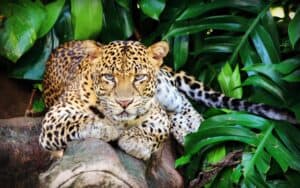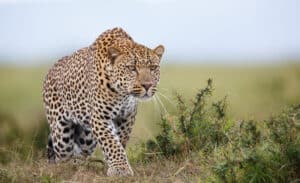The Amur leopard (Panthera pardus orientalis) is a subspecies of leopard native to eastern Russian and northern China. A member of the subfamily Pantherinae which includes lions, tigers, and jaguars, the Amur leopard is a medium-sized cat and one of the rarest animals on Earth. They are graceful, cold-weather cats that have managed to claw themselves back from the jaws of extinction. Here is a list of 10 incredible Amur leopard facts that demonstrates what makes these cats so amazing.
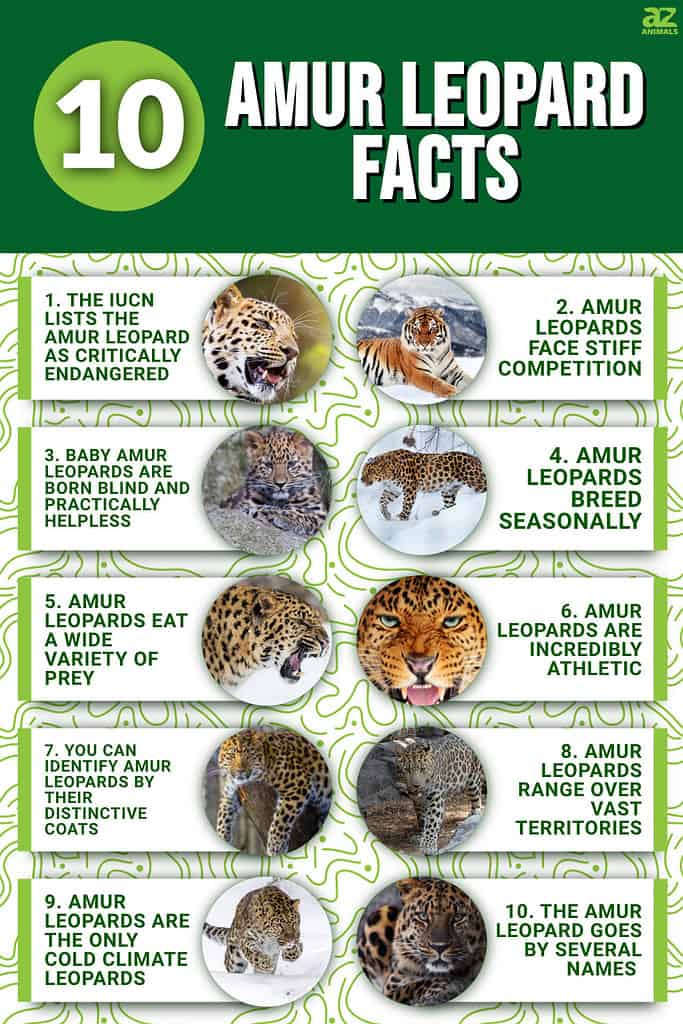
10. The Amur Leopard Goes by Several Names
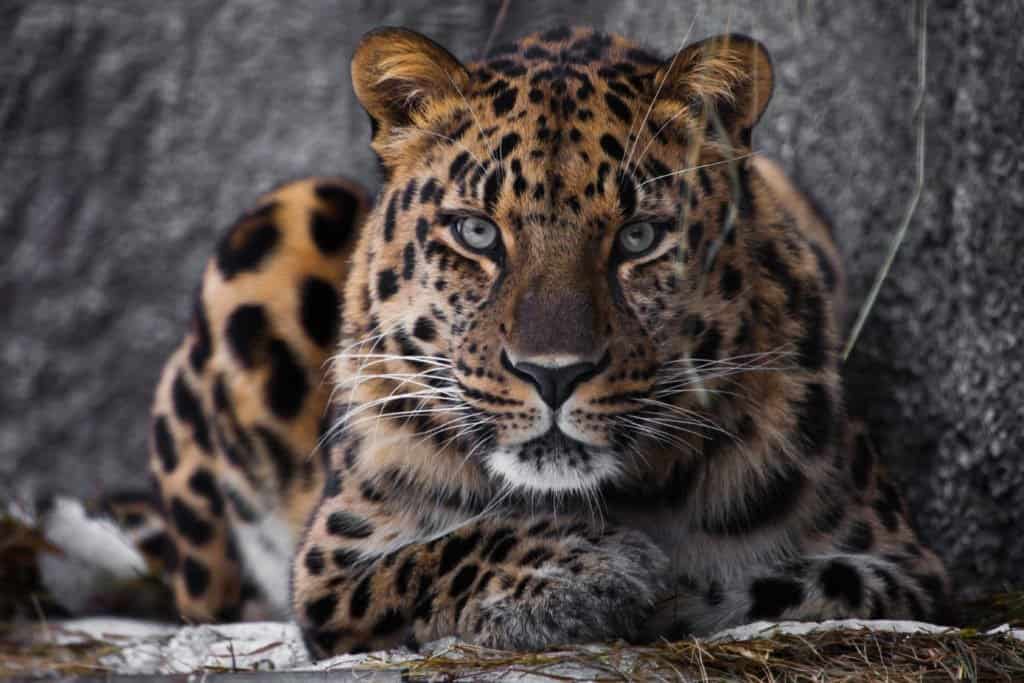
The Amur leopard goes by many names.
©Mikhail Semenov/Shutterstock.com
For our first entry on our list of Amur leopard facts, we’ll delve into the reasons behind the Amur leopard’s many names. Like so many animals, the Amur leopard is called different names by different people. Its most recognizable name, the Amur leopard, traces back to 1930 when researcher Reginald Pocock chose the name for a leopard skin recovered from the Amur Bay in eastern Russia.
The Amur leopard goes by several other names, including the Siberian leopard, Far Eastern leopard, Manchurian leopard, and Korean leopard. All of these names make sense, given the Amur leopard’s distribution throughout eastern Russia and northern China. While the Amur leopard is effectively extinct in Korea, it historically dwelt in both North and South Korea. Although it was extirpated from the peninsula during the period of Japanese occupation, the name Korean leopard endures.
9. Amur Leopards Are the Only Cold Climate Leopards
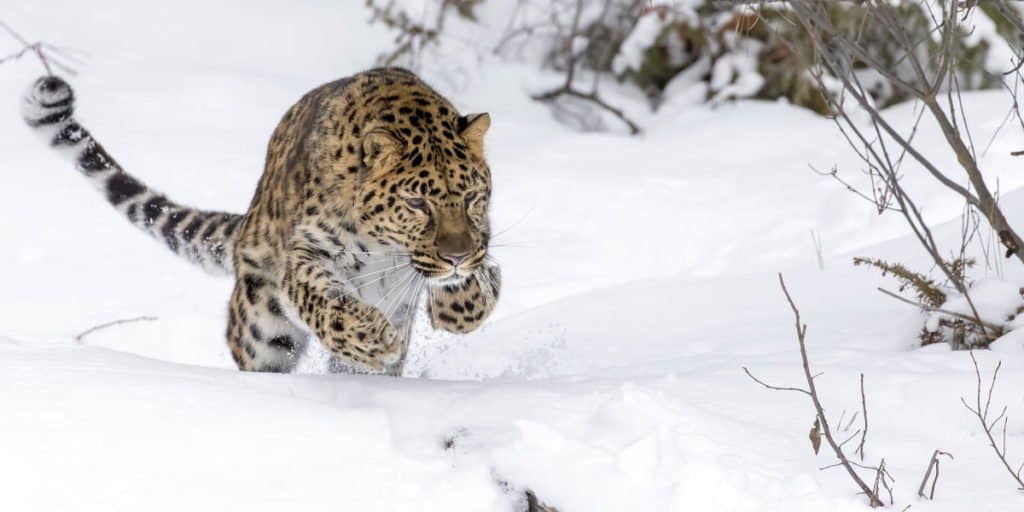
Amur leopards are well-adapted to the cold.
©Grindstone Media Group/Shutterstock.com
When most people think of leopards, they tend to think of sleek, warm-weather cats lounging in jungles and rainforests. It’s true that the majority of the world’s leopards live in subtropical and tropical regions, grasslands, savannas, and deserts. You can find them throughout central and southern Africa and southern and eastern Asia.
However, while most leopards adapted to live in hot and arid climates, the Amur leopard thrives in the colder, mountainous regions of eastern Russia and northern China. Today, it represents the only extant leopard that is well-adapted to live in cold-weather climates. Along with its thicker-than-average coat, it also possesses longer legs and wider paws designed to help it live in areas with thick snow.
8. Amur Leopards Range Over Vast Territories
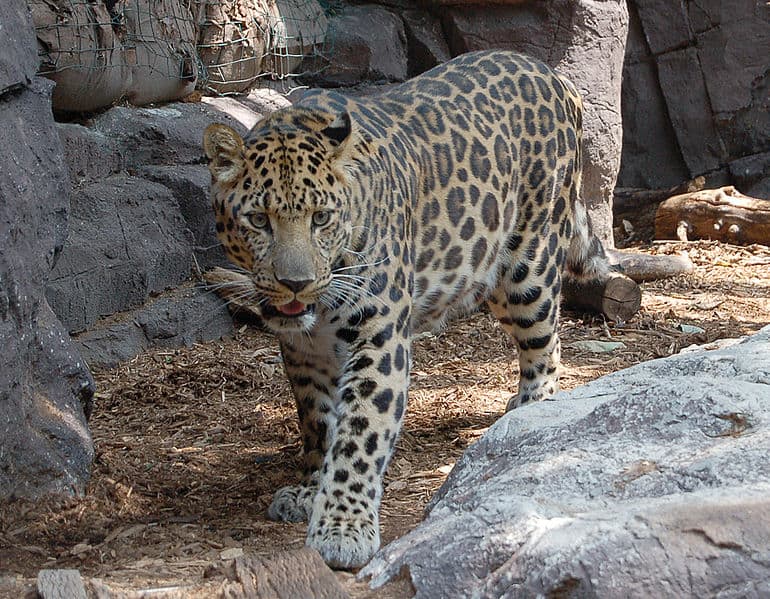
Amur Leopard at Philadelphia Zoo
©Derek Ramsey (Ram-Man), CC BY-SA 2.5, via Wikimedia Commons – License
Like many other big cats, Amur leopards are solitary creatures. They tend to keep to themselves and aggressively defend their territory outside the breeding season. While two leopards may occasionally share some territory, overlaps are typically slight and rare. On average, an adult Amur leopard will control a territory between 20 and 120 square miles.
Amur leopards are also known to be particularly selective when it comes to selecting their home territory. They prefer to live in a river basin with relatively easy access to fresh water and rugged terrain in which to hide and hunt. Over the years, they will travel the same routes many times, thereby developing well-worn trails.
7. You Can Identify Amur Leopards by Their Distinctive Coats
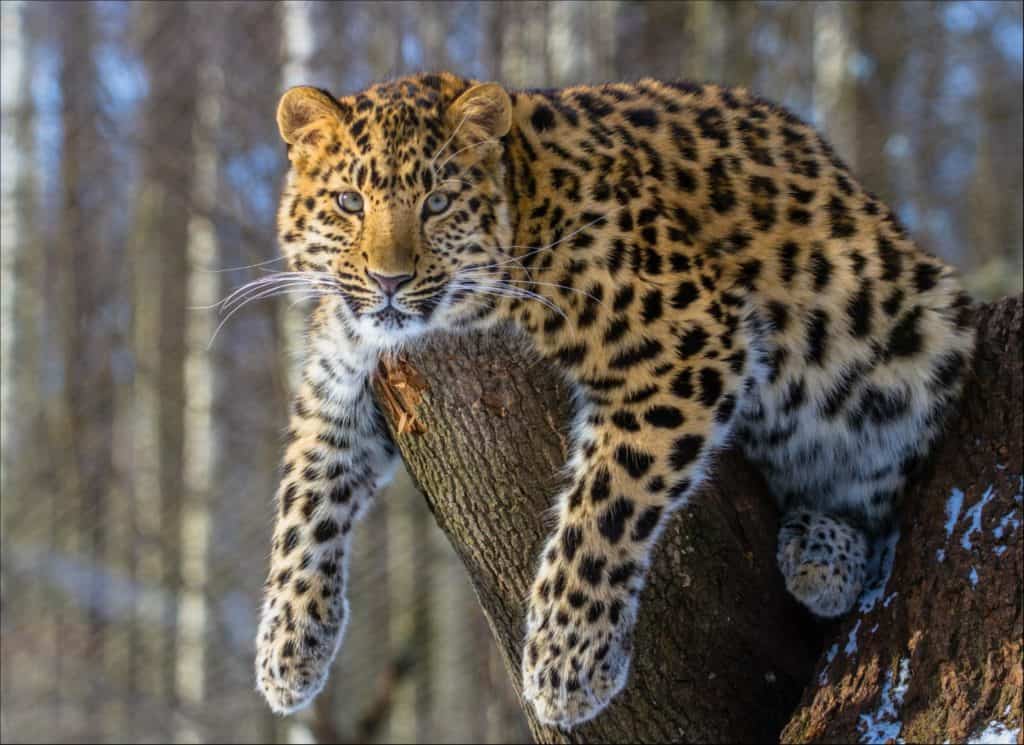
Amur leopard rosettes are spaced further apart than other leopards.
©Dmitri Gomon/Shutterstock.com
This next entry is one of our more colorful Amur leopard facts. As you likely already know, many big cats sport distinctive coats containing recognizable colors, textures, and patterns. Tigers are known for their orange and black stripes, while lions are famous for their magnificent mains. Similarly, leopards feature characteristic patterns that distinguish them from other big cats.
Like other leopard subspecies, Amur leopards sport dark markings known as rosettes across their coats. Compared to other leopards, an Amur leopard’s rosettes are spaced further apart and appear thicker. Aside from the rosettes, you can easily tell them apart from other leopards because their coats are longer, thicker, and lighter in hue. The coat turns especially light in winter, appearing light yellow to yellowish-red with a bit of gold.
6. Amur Leopards Are Incredibly Athletic
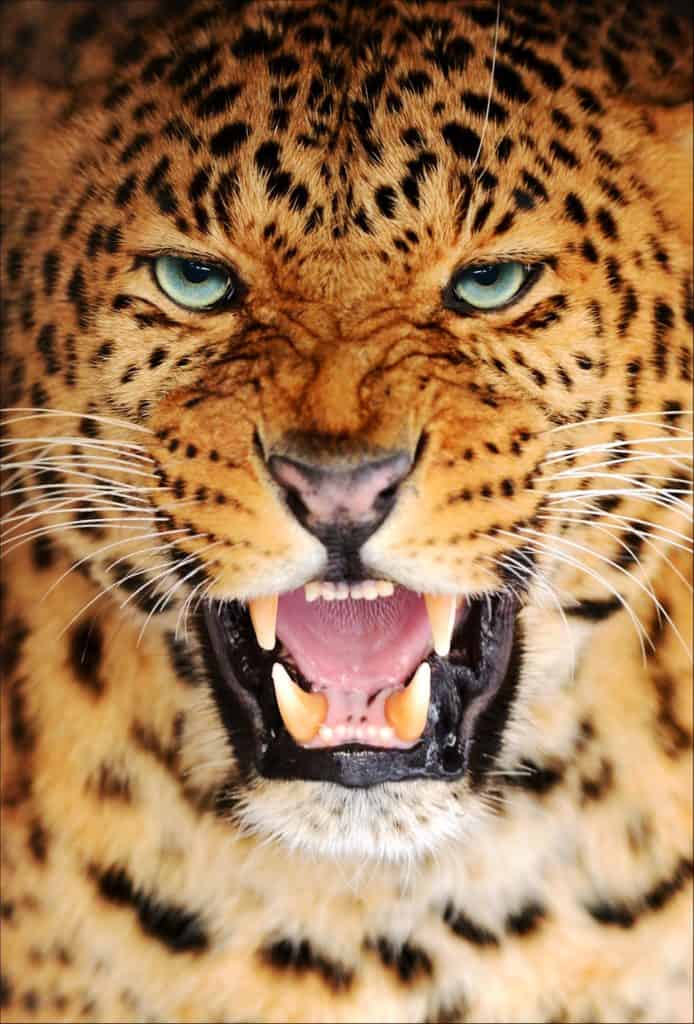
Amur Leopards are extremely athletic.
©kyslynskahal/Shutterstock.com
Big cats are well-known for their amazing feats of strength and dexterity. From swift-footed cheetahs to powerful tigers, big cats have adapted unique physical attributes that make them successful predators. While not the largest or fastest of the big cats, leopards are by no means slouches when it comes to athletic prowess.
On average, female Amur leopards weigh between 55 and 95 pounds, while males measure from 70 to 110 pounds. They can run nearly 40 miles per hour at top speed, although they can only maintain that speed for short bursts. Moreover, they are powerful leapers capable of jumping 10 feet into the air and nearly 20 feet horizontally.
5. Amur Leopards Eat a Wide Variety of Prey
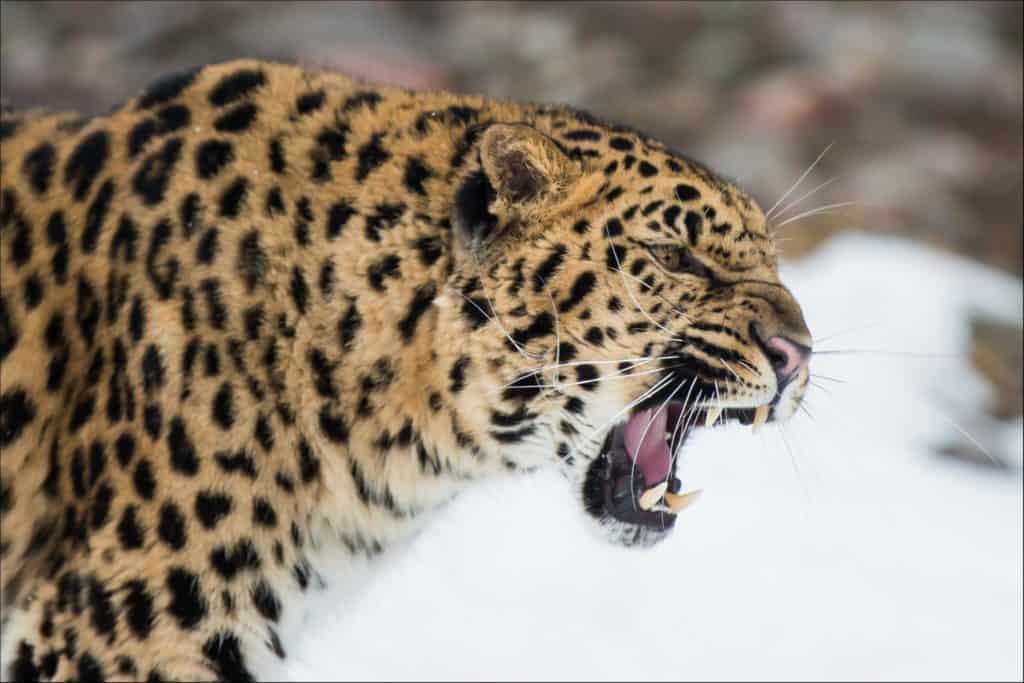
Amur leopards eat deer, boar, and other large animals.
©Warren Metcalf/Shutterstock.com
Similar to many big cats, Amur leopards are nocturnal carnivores. They rely on stealth to surprise their prey and then deliver a killing blow with their powerful jaws and raking claws. Their rough tongues allow them to scrape the meat from the bones of their prey. If the prey is too large to eat all at once, they will occasionally hide their kill to finish their meal in peace and avoid having to share with other predators.
Despite their relatively small size compared to other cats, they can still take down large prey. They mainly prey on deer such as Manchurian sika deer, Siberian musk deer, and Siberian roe deer but will also readily take down wild boar. They will even kill and eat young Asian black bears when the opportunity presents itself. That said, they will readily catch and eat smaller prey such as rabbits, rodents, and fowl.
4. Amur Leopards Breed Seasonally
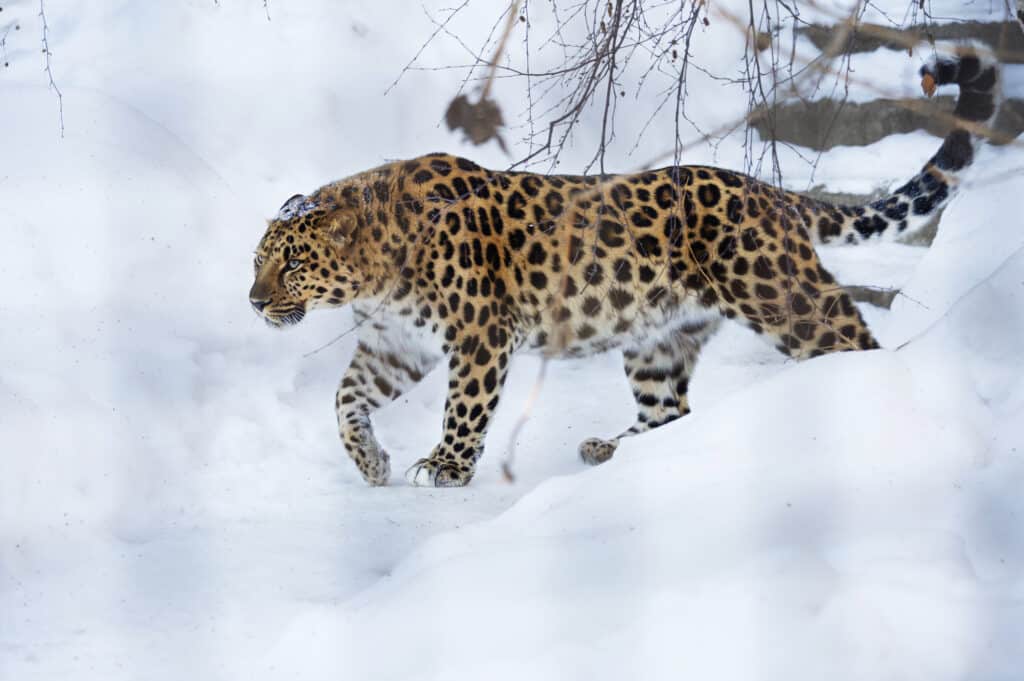
Amur leopards typically breed in late winter.
©iStock.com/opposable-toothed mandibles
When they reach around 2 or 3 years old, Amur leopards become sexually mature. They remain in their sexual prime until the age of 10 to 15, at which point they lose the ability to reproduce. According to evidence, Amur leopards tend to breed seasonally in the wild, and the breeding season typically falls in late winter.
During the breeding season, a male leopard will follow a female leopard around through her territory. He will fight off other males for the right to mate with the female and must be quick to capitalize on their victory. Female leopards only go into estrus – the period during which they can procreate – for around 10 to 25 days, so there is a very limited window in which Amur leopards can successfully mate and create offspring.
3. Baby Amur Leopards Are Born Blind and Practically Helpless
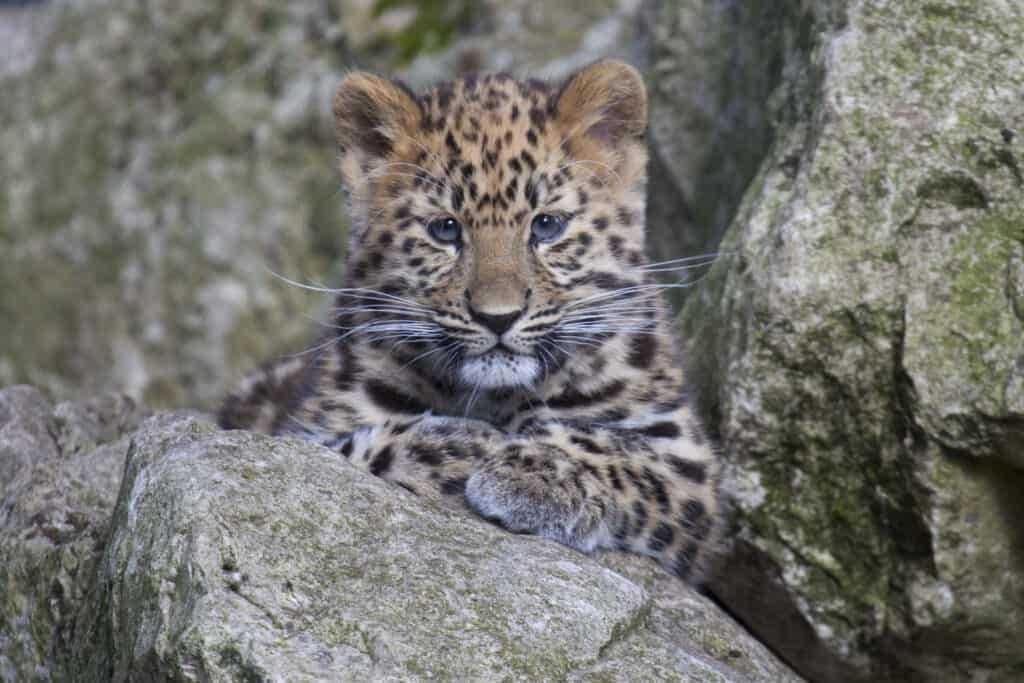
Amur leopard cubs can’t open their eyes until they’re at least a week old.
©iStock.com/AlanJeffery
The next entry on our list of Amur leopard facts is easily one of the cutest. Upon successfully mating during the breeding season, a female Amur leopard will gestate for around 12 to 14 weeks. Upon birth, the litter will contain anywhere from 1 to 4 leopard babies, known as cubs.
At birth, Amur leopard cubs typically weigh barely more than a pound and no heavier than 2 pounds. They are born completely blind and cannot even open their eyes. By the time they’re around one week old, they gain the ability to open their eyes, and a few days later, they will start to explore their den. Around 2 months of age, they begin to venture out of their den and eat meat. Until then, they subsist almost exclusively on their mother’s milk. They will stay with their mother until they are around 1.5 to 2 years old, after which they will venture out independently.
2. Amur Leopards Face Stiff Competition
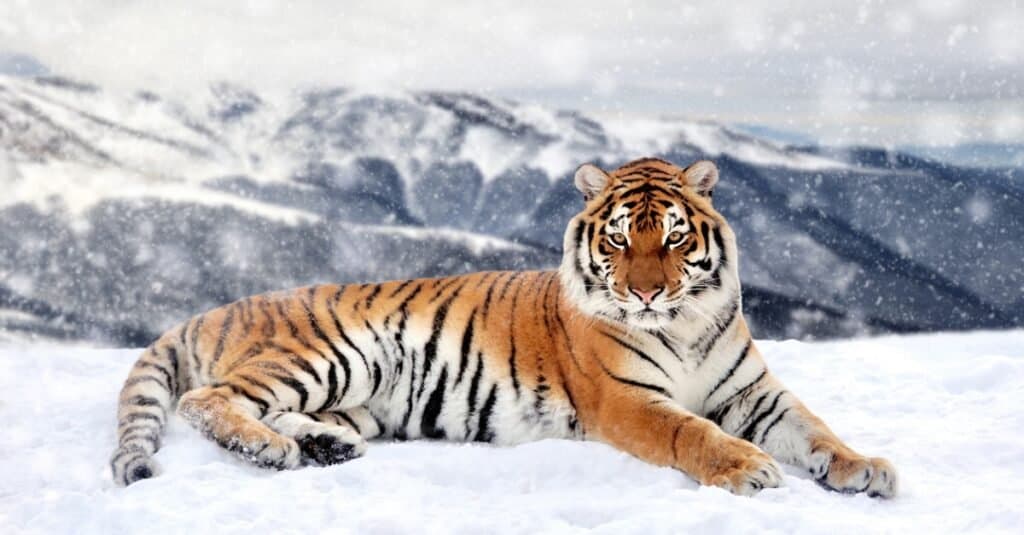
Amur leopards must compete with themselves and tigers.
©iStock.com/Byrdyak
Being an Amur leopard is by no means a walk in the park. In addition to their rugged environment and solitary lifestyle, Amur leopards face significant competition in the game of life. Given the low number of leopards remaining in the wild, genetic diversity and inbreeding are major issues that can make leopards more susceptible to disease and lead to birth defects.
Not only must they compete with other leopards for food, territory, and breeding rights, but they also face threats from other predators. Amur leopards and Siberian share a geographic range in some areas, which can lead to clashes, particularly when prey is in short supply. When they do meet, the much larger tiger usually comes out on top.
1. The IUCN Lists the Amur Leopard as Critically Endangered
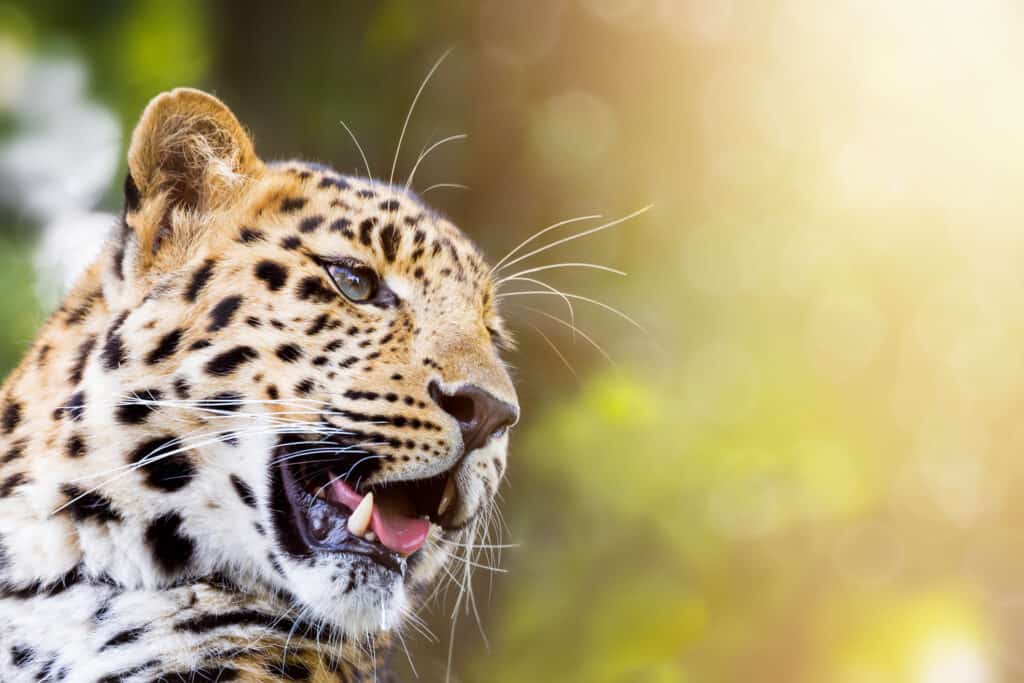
The IUCN lists the Amur leopard as a Critically Endangered species.
©iStock.com/Rixipix
The final entry on our list of Amur leopard facts is also the saddest. Overall, the Amur leopard faces numerous threats that throw its continued existence in the wild into question. As of 2021, researchers estimate that only 110 Amur leopards remain in the wild. This is much greater than the estimated 19 to 26 wild Amur leopards in 2007 but still much lower than the historical population peak. It’s no wonder that many researchers consider the Amur leopard to be the rarest cat on Earth.
While conservationists are hard at work to protect Amur leopards, they face a long, uphill battle. Amur leopards continue to face threats including poaching, habitat loss, climate change, and the regular issues of predation, infighting, and disease. As a result, the IUCN lists the Amur leopard as a Critically Endangered species.
The photo featured at the top of this post is © Dmitri Gomon/Shutterstock.com
Thank you for reading! Have some feedback for us? Contact the AZ Animals editorial team.



